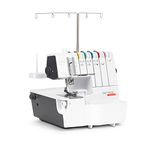10 bestOverlockersof December 2025
112M consumers helped this year.
1
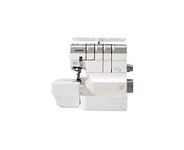
Janome AirThread 2000D Professional Overlocker
Janome

9.8
2
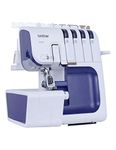
Brother Overlocker 4234D
Brother

9.6
3
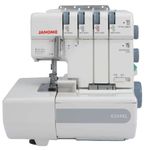
Janome 6234XL
Janome

9.4
4
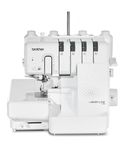
BROTHER Airflow 3000 Air Overlock Machine, White, Compact, Plastic, 12 kg, 30.1 x 37 x 35.5 cm, 1300 Stitches/Min, 2-4 Thread Overlock Stitches, Differential Drive, Instant Rolled Hem
Brother

9.2
5
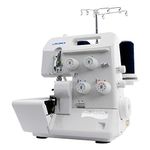
JUKI MO-654DE Serger, Metal, White, 34 x 27 x 29,5 cm
JUKI

9.0
OtherUp to 5% off
6
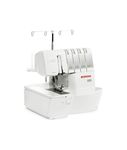
Bernina L 450 Overlock Machine
Bernina

8.8
7

Brother CV3550 Overlock Sewing Machine, White
Brother

8.5
8
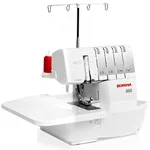
Bernina, L 460
Bernina

8.3
9
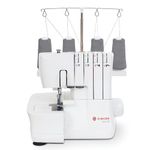
SINGER S14-78 Serger, White
Singer

8.0
3% off
10
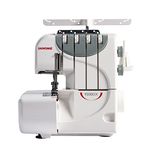
Janome 9300DX
Janome

7.8
A Guide to Selecting the Best Overlockers
Choosing the right overlocker, also known as a serger, can significantly enhance your sewing projects by providing professional finishes and efficient sewing capabilities. Overlockers are designed to sew over the edge of one or two pieces of cloth for edging, hemming, or seaming. When selecting an overlocker, it's important to consider the types of projects you plan to undertake, your skill level, and the features that will best support your sewing needs. Understanding the key specifications will help you make an informed decision and ensure that the overlocker you choose will meet your expectations and enhance your sewing experience.
Number of Threads
The number of threads an overlocker can use is crucial because it determines the types of stitches you can create. Overlockers typically range from 2 to 5 threads. A 2-thread overlocker is suitable for lightweight fabrics and basic edging, while a 3-thread overlocker is great for general-purpose sewing and light to medium fabrics. A 4-thread overlocker provides a strong seam and is ideal for knit fabrics, offering both seam and overcast in one step. A 5-thread overlocker adds a chain stitch, which is perfect for heavy-duty sewing and professional finishes. Consider the types of fabrics and projects you will be working on to decide the appropriate number of threads for your needs.
Differential Feed
Differential feed is a feature that allows you to adjust the feed dogs to move the fabric at different rates. This is important for preventing fabric puckering or stretching, especially with stretchy or delicate fabrics. Overlockers with differential feed can handle a wider range of fabrics and provide more professional results. If you plan to work with a variety of fabric types, especially knits or stretchy materials, look for an overlocker with adjustable differential feed to ensure smooth and even stitching.
Stitch Width and Length
Stitch width and length settings allow you to customize the size of your stitches, which is important for achieving the desired finish on different fabrics. Wider stitches are useful for thicker fabrics or when you need a more secure seam, while narrower stitches are better for lightweight fabrics. Adjustable stitch length is also important for creating different types of seams and finishes. If you want versatility in your sewing projects, choose an overlocker that offers a range of stitch width and length adjustments.
Ease of Threading
Threading an overlocker can be complex, so ease of threading is an important consideration, especially for beginners. Some overlockers come with color-coded threading guides, automatic threading systems, or lay-in threading, which can make the process much simpler and quicker. If you are new to using an overlocker or prefer a more user-friendly experience, look for models that emphasize easy threading features to reduce frustration and save time.
Built-in Rolled Hem
A built-in rolled hem feature allows you to create narrow, professional-looking hems without changing the presser foot or plate. This is particularly useful for finishing edges on lightweight fabrics like silk or chiffon. If you frequently work with delicate fabrics or want to add a polished finish to your projects, consider an overlocker with a built-in rolled hem function for added convenience and efficiency.
Adjustable Presser Foot Pressure
Adjustable presser foot pressure allows you to control how tightly the presser foot holds the fabric as it is being sewn. This is important for ensuring even feeding and preventing fabric distortion, especially when working with thick or thin materials. If you plan to sew a variety of fabric types, look for an overlocker with adjustable presser foot pressure to accommodate different thicknesses and textures, ensuring smooth and consistent results.
Best Reviews Guide Newsletter
Get exclusive articles, recommendations, shopping tips, and sales alerts
Sign up for our newsletter to receive weekly recommendations about seasonal and trendy products
Thank you for subscribing!
By submitting your email address you agree to our Terms and Conditions and Privacy Policy
